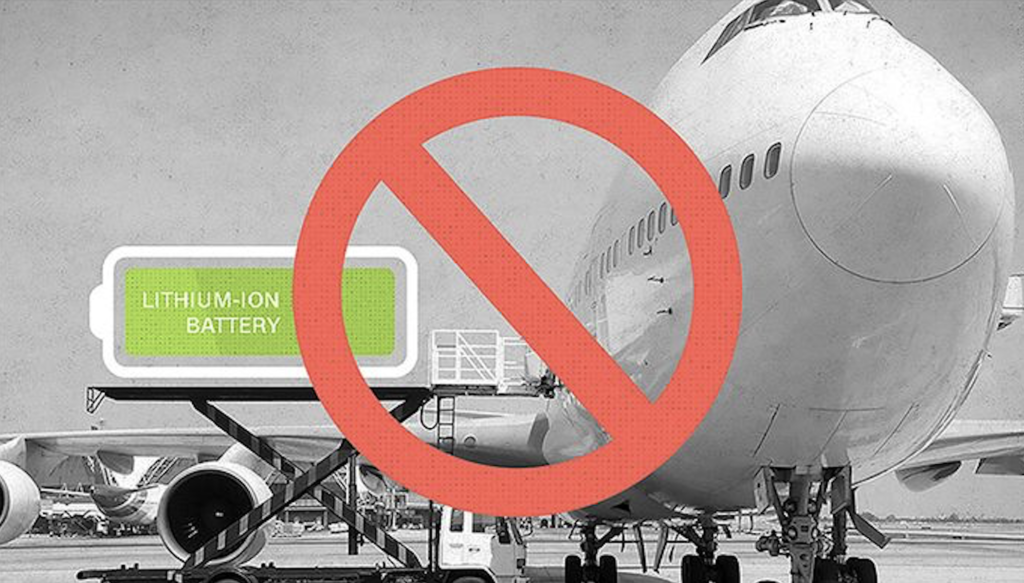Originally published at: http://esk8.news/esk8-airplanes-what-a-nightmare/
With electric skateboards being an ideal last-mile solution for travel, it makes sense that many would want to take them along to have fun and save a few bucks when going on trips or vacation. However, due to a plethora of restrictions that exist globally, this can be dangerous for you, your board, and those around you. Here, we explore the do’s and don’ts of airplane travel with your esk8s, and the different countries where you’ll want to take them to.
History
Image Credit to CNN.comLithium batteries in general have a bad reputation due to their highly explosive nature. In September 2010, right around the time lithium battery demand was itself exploding due to use in phones, the heavy and volatile cells were still being flown around on cargo planes with little precaution taken to prepare them for air travel. This included the lack of cell insulation, allowing thermal runaway to take over entire groups of cells. On September 3rd, a UPS 747 went down when some cells auto-ignited and caused a fire that destroyed the entire cockpit control array. This, along with a few other incidents, sent the air industry into a frenzy of guidelines and protections regarding batteries and left us with what we have today.
Battery Type/Size
As you should know if you’re in the practice of esk8 building, the size and type of battery you use has a profound impact on how safe the board is. Your battery must be 99wh or less to take on board (136wh if pre-approved), or you can have a segmented battery which breaks into 99wh sections. Regardless of size, the volatility of common battery types goes as such:
- Lithium Polymer (LiPo) is the most volatile
- Lithium Ion Phosphate Prismatic (LiFePo)
- Lithium Ion (Li-Ion) is somewhere in the middle
- Lithium Iron Phosphate (LiFePo) is the least volatile
In terms of being safe for those around you, I would advise not bringing LiPo batteries on airplanes. If you forget to stow batteries in your carry-on and end up putting lithium in the cargo hold, the type of battery that has the least chance of starting a fire in the cargo hold is LiFePo in a Cylindrical configuration, due to its inherently composed nature and lack of explosiveness. The most common type of cell in commercially produced boards is Li-Ion, however.
If you are absolutely intent on bringing your LiPo-powered machine on an airplane, drone users have some great advice and experience that you should look into.
Image Credit to chibatterysystems.comAllowance by Country and Airline
There are various countries & airlines that have their own laws and guidelines regarding esk8, and on many occasions security that makes the decisions on whether or not to let you in with your skateboard have no idea what their own guidelines are. The result is that going from point A to point B over the air with your electric skateboard could get the vehicle confiscated, regardless of whether or not its legal or you’ve done it before. Just ask Casey Neistat – despite diverse opinion on his videos, he has plenty of experience with the complete luck-of-the-draw experiences of esk8 + airport security.
That being said, I don’t recommend bringing any esk8 on a flight or to a different country without being fully prepared (emotionally as well) to lose your vehicle permanently. FYI: United Airlines will not allow any electric skateboards on flights. Period.
How to Minimize Risk
One way to make sure that your esk8 is allowed on the plane is to have a small esk8. This makes it easier to stow and keep out of peoples way. Usually a 29″ deck is the perfect size.
Also, be responsible with it. Don’t turn your board on from the point that you enter airport A to the point that you leave airport B. A lot of airports have disallowed personal transport vehicles anyways, and attracting attention is stupid when you are trying to bring what is nothing less than a potential bomb on board.
Image Credit to Ben SchwartzAll in All
Esk8s are amazing last mile solutions – we all know that. So, if you’re bringing yours on board, make sure that you are doing everything you can to allow others to do the same in the future. Declare large batteries, be responsible with all batteries, and know the ins and outs of your vehicle and the airport system to make the process as smooth as possible. All of this will help, and the more research, the better. Have a great trip, take some photos of your ride in cool new places, and keep skating!
Other information on this topic and specific information by country can be found here.





